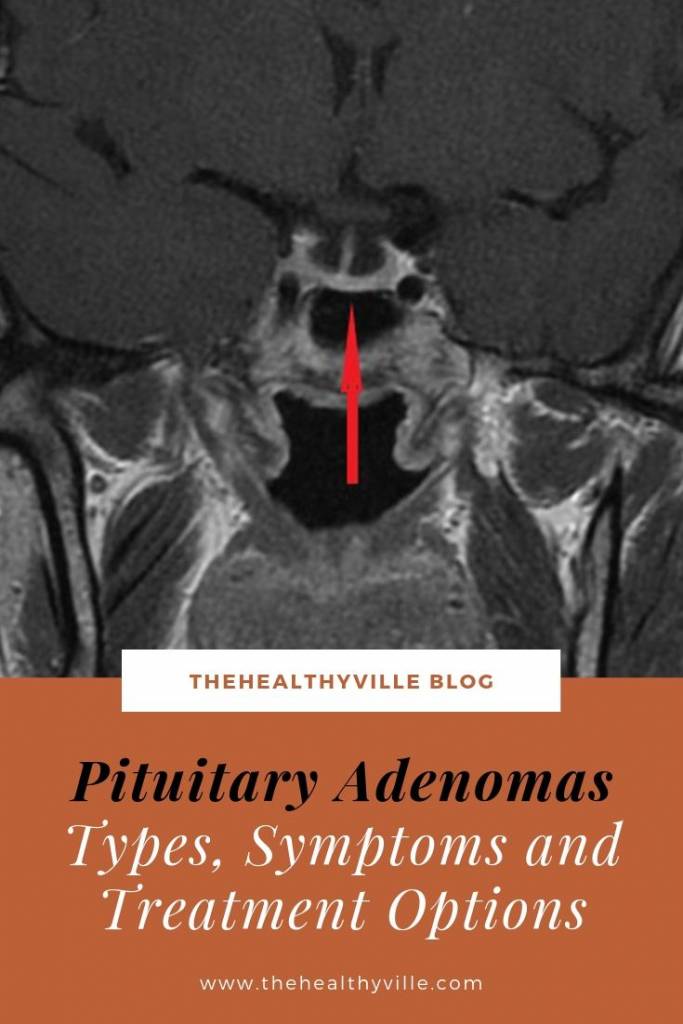The pituitary adenomas can be safely treated if discovered on time, but also deadly if you discover them too late. See the signs and the treatment options.
The pituitary adenoma is relatively common and manifests with an approximate frequency of 1 in every 1000 adults. In general, it is a benign and slow-growing tumor
The pituitary adenoma is a slow growing benign tumor. It originates in the cells that make up the pituitary gland. This gland regulates the function of other glands in the body, which is why it is so important.
The pituitary adenoma is relatively common and manifests with an approximate frequency of 1 in every 1000 adults. In general, it is a benign and slow-growing tumor. On the other hand, pituitary carcinomas or malignant tumors are very unusual.
In terms of sex, there is no distinction. Pituitary adenomas affect both women and men. Regarding age, there is a higher incidence between 30 and 40 years.
The actual causes of pituitary adenoma are unknown, although in some cases it is related to a genetic disease called Multiple Endocrine Neoplasia Syndrome.
Symptoms of pituitary adenoma
The main symptom that results from these tumors is the alteration in the secretion of hormones. Depending on the incidence of the tumor in the pituitary gland, they can produce too much of one or more hormones.
Due to the alteration in the endocrine system, the symptoms can be:
- Hyperthyroidism: this symptom is quite unusual in those affected by a hypophyseal adenoma.
- Cushing’s syndrome: the level of the hormone cortisol is higher than normal.
- Acromegaly: in the case of an elevated level of growth hormone in children gigantism will occur. In the case that this occurs in an adult, there is talk of acromegaly.
- Secretion and milk production in men and women.
- Irregular menstrual periods in women, due to alteration of sex hormones.
On the other hand, symptoms that occur when there is compression of brain structures due to a large pituitary tumor may include:
- Visual disturbances such as double vision, loss of visual field, drooping eyelids or changes in color vision.
- Headache.
- Fatigue and drowsiness.
- Nasal flow of clear liquid.
- Nausea and vomiting.
- Problems with the sense of smell.
When these symptoms manifest themselves suddenly and simultaneously, they can be serious. In addition, they can cause a hypophysis infarction.
Types of pituitary adenomas
Pituitary adenomas can be classified according to size as follows:
Microadenomas: less than 1 cm.
Macroadenomas: greater than 1 cm. This type of adenoma causes a high percentage deficit in one or more pituitary hormones.
In addition, pituitary adenomas can be classified according to whether they secrete hormones themselves or not. Following this criterion, they can be functional, if they secrete hormones by themselves, and non-functional adenomas, if they do not secrete hormones.
Diagnosis
For the diagnosis, it is necessary to perform a physical examination, in which doctors can analyze any problem of double vision and visual field. In addition, the loss of lateral or peripheral vision and the ability to see in certain areas are also studied.
Then, an analysis of the endocrine function is performed to look for any signs of hormonal excess or irregularity. Parameters are measured such as elevated cortisol levels, Cushing’s syndrome or too much growth hormone.
The most relevant tests that help confirm the diagnosis are visual field and CT and brain MRI.
Treatment of pituitary adenomas
Current therapeutic options include:
Pharmacological treatment and hormonal substitution: drugs that block hormone secretion can control the symptoms and even reduce the size of the tumor.
Radiotherapeutic techniques: doctors use these often to reduce the size of the tumor.
Surgery of the pituitary adenoma: the removal of most of these tumors is through the nasal cavity. However, in other cases, the patient need a craniotomy or opening of the skull.
Endoscopic nasal surgery consists of introducing an endoscope through the nostrils, which slides between the middle turbinate and the nasal septum, until the sphenoid hole is located. This orifice is enlarged to achieve a sufficient opening of the sphenoid sinus and visualize the floor of the sella turcica to extract the tumor.
The most serious complication is blindness, in case of a severe damage to the optic nerve. In addition, the tumor or its removal can cause hormonal imbalances for life and cause diabetes insipidus. The symptoms for this type of diabetes are frequent urination and extreme thirst.
Don’t forget to SHARE the pituitary adenomas types, symptoms and treatment options with your friends and family on your social networks!

